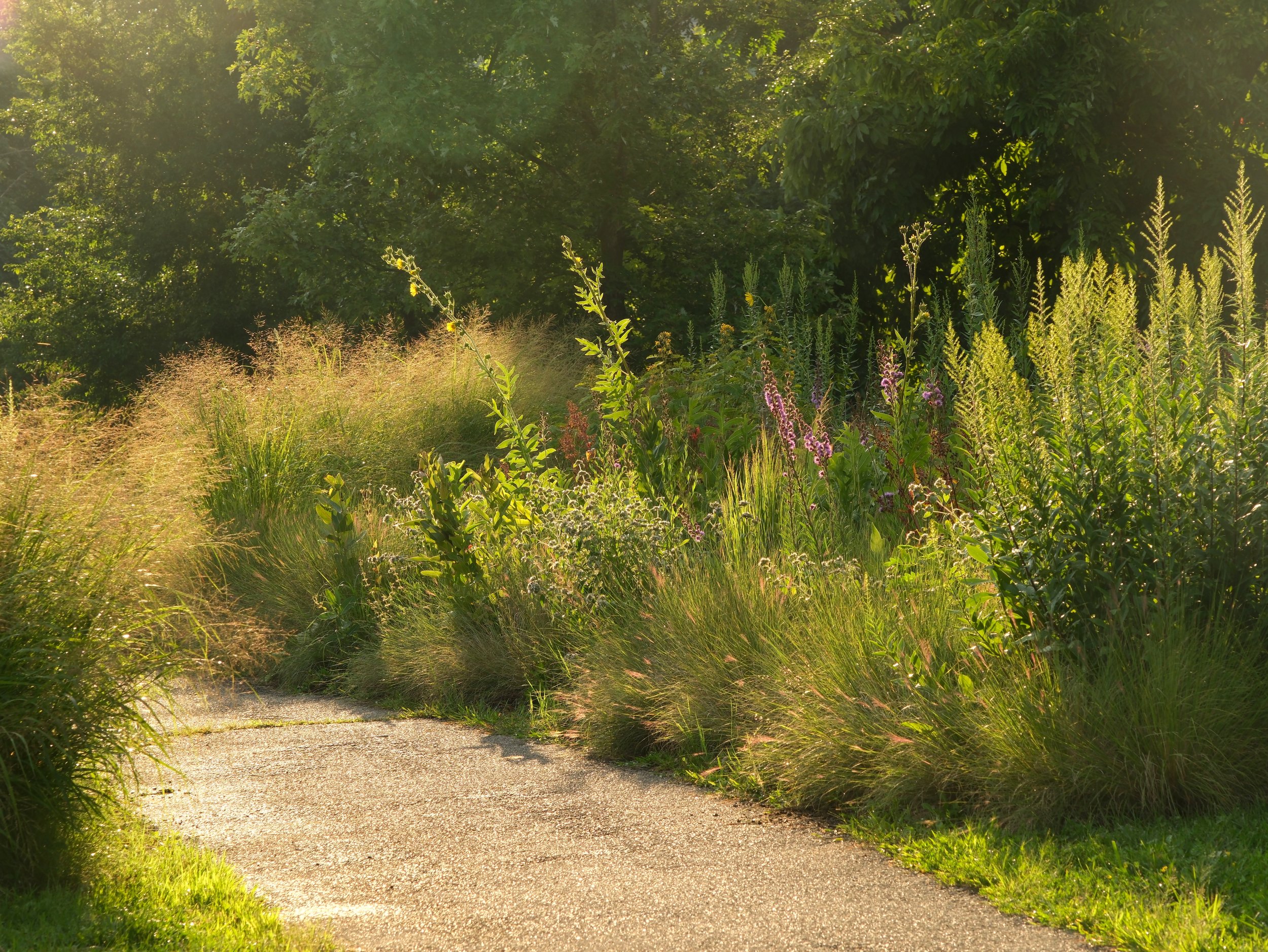Planting is the Beginning
We believe in fostering enduring, collaborative relationships with clients. That’s what allows our plantings to thrive over the long-term.
For many landscape design firms, the day of planting marks the end of their involvement.
At Thicket Workshop, this step is likely closer to the beginning. Site analysis, layout, and planting—all are critical steps in our design process. We plan these steps with great care. But we treat planting design as process that unfolds through time as plants grow and change.
Projects might start like this...
By remaining involved after planting, we’re able to guide landscapes—both residential and commercial—into durable and beautiful communities of plants.
One priority of ecological planting is to create a vibrant, biodiverse fabric of plants across on a site. This offers habitat and reduces required management. But it takes time: Plants mature; seeds sprout, grow. Ecological plantings have an establishment period.
We aim to stay actively involved in projects during this period. If possible, we make monthly site visits with clients. (If the project is far away, we’ll often review images or videos clients send to us.) Each visit is a chance to have a conversation.
...but can look like this once established
“In this approach, design is iterative and responsive to the site as the plants grow. We think that’s an important recognition as we balance ecology, client goals, and budget.”
These conversations are often about practicalities. Are the plants receiving enough water? Are there weeds? But we also talk about and evaluate broader questions of the site’s design: Does the alignment of the path allow for a meander through the meadow? Does the late-day light striking across the site highlight the leaves of a thicket of dogwood and spicebush?
In this approach, design is iterative and responsive to the site as the plants grow. We think that’s an important recognition as we balance ecology, client goals, and budget.
For many projects, it’s the clients themselves who will steward the planting as it grows, based on our advice—and often from a management guide we’ve assembled. Other times Thicket Workshop is hired for stewardship or we assist clients in finding an appropriately knowledgeable landscape contractor to help.
Snag Garden, which we've tended as it has continued to establish
At the end of that establishment phase—which is often 1 year for smaller residential projects but longer for larger, more complex properties—the plant community has formed cohesive cover across the site. Yet we still aim to meet the clients on site at least annually, visiting during a different month of the growing season each year. This allows us to continue guiding the planting as it evolves. It’s this stewardship over time that results in engaging landscapes that seem to spring from the site itself.
It’s enormously rewarding to be involved as a client begins to learn and appreciate the significant changes that have been made on their property. It’s wonderful to hear that a client just saw their first giant swallowtail butterfly. Or that they just noticed the first cardinal flower bloom of the season.
In many ways, they’re seeing their own property in a new way.
New York Ironweed and Elderberry thriving in Snag Garden
Following establishment, the goal is often to have a dense, verdant community of plants





